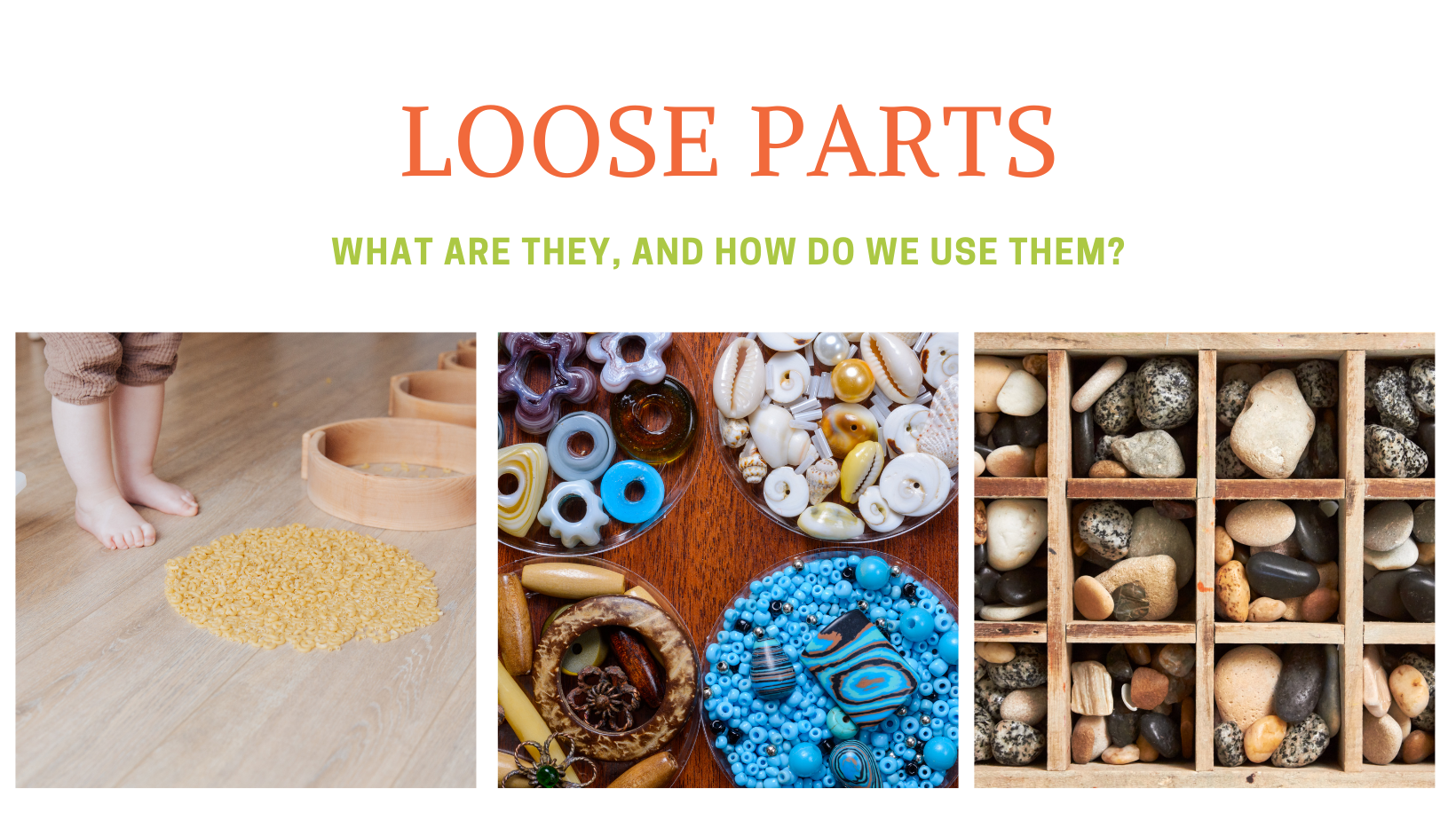
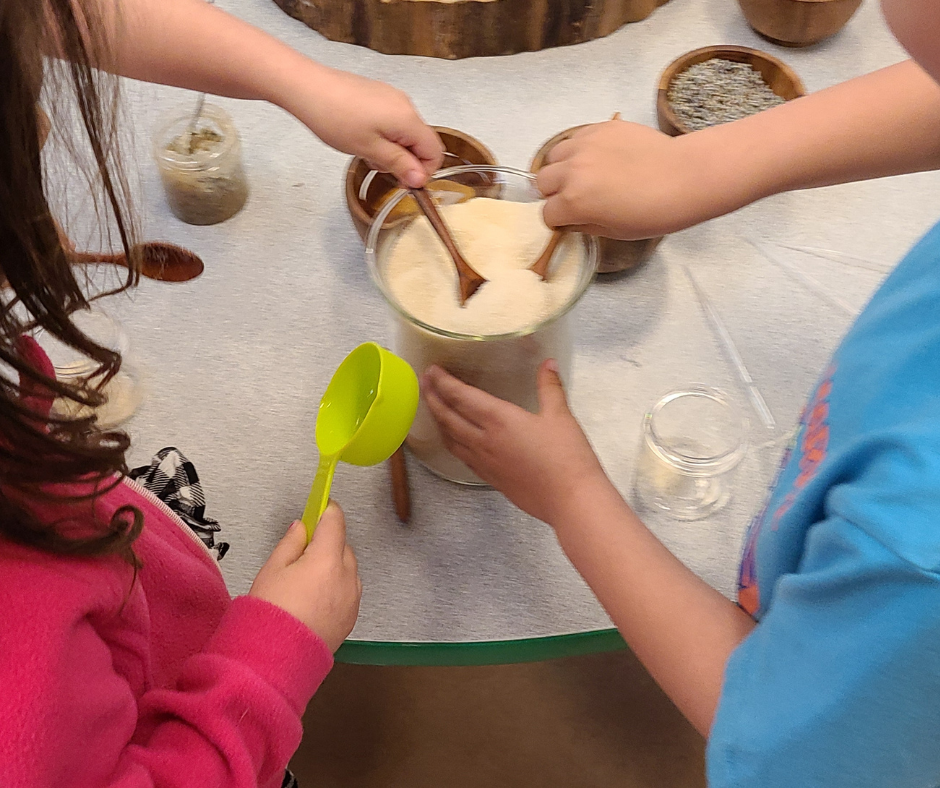
What are Loose Parts?
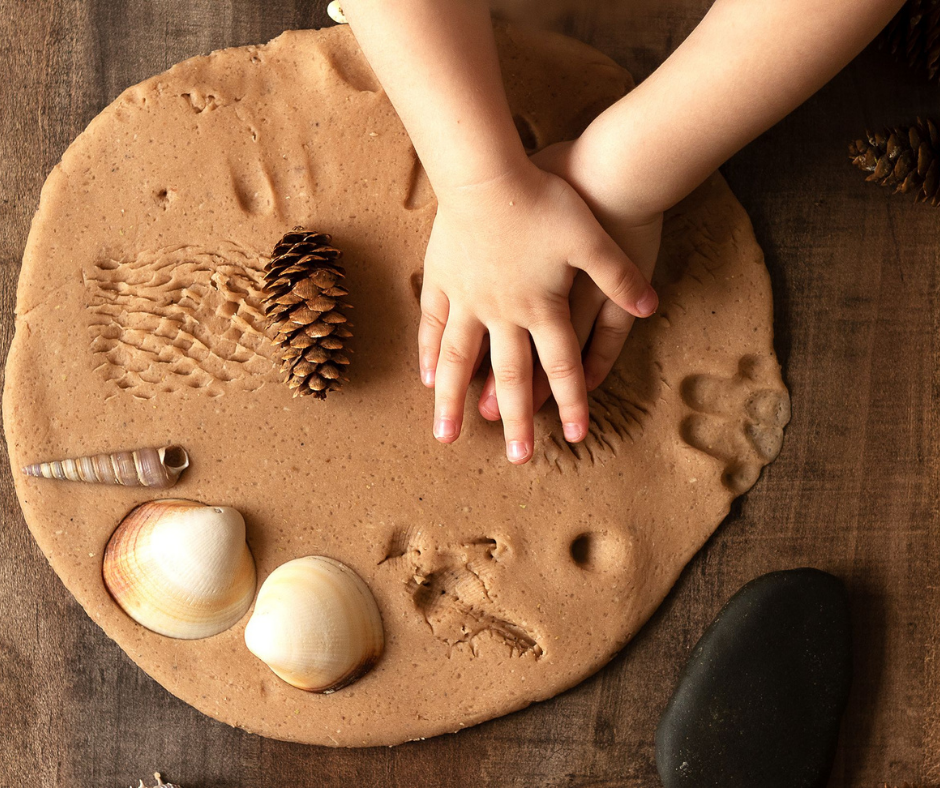
Loose parts are natural and recycled materials that provide endless possibilities for children to develop creativity and deepen critical thinking and problem-solving. What others may see as “junk” or items to be discarded, children see as endless exploration and opportunity! We’ve all heard the tale of the child who would rather play with the box a toy came in rather than the toy itself; this is a prime example of the tantalizing wonder loose parts bring to the early childhood environment. What appears as a pile of seashells, dough, twist ties, pipe cleaners and bobbins to adults can quickly become a fairy village, unicorn utopia, superhero land, bear cave, rocket ship, or more to a child.
In 1972, architect Simon Nicholson developed the Theory of Loose Parts during his work with playground and school design, rethinking static environments and instead using loose materials to encourage a child’s natural creativity. In an emergent environment such as ours, loose parts reflect Loris Malaguzzi’s image of the child: if you believe the child to be inquisitive and creative, competent and capable, intelligent and whole, then you will create environments that reflect this. Loris Malaguzzi was the founder of the Reggio Emilia educational philosophy, a philosophy that believes children use many, many different ways to show their understanding and express their thoughts and creativity. Many different ways of thinking, of discovering, of learning through drawing and sculpting, through dance and movement, through painting and play, through modeling and music, and that each one of these ways deserves to be valued and nurtured.
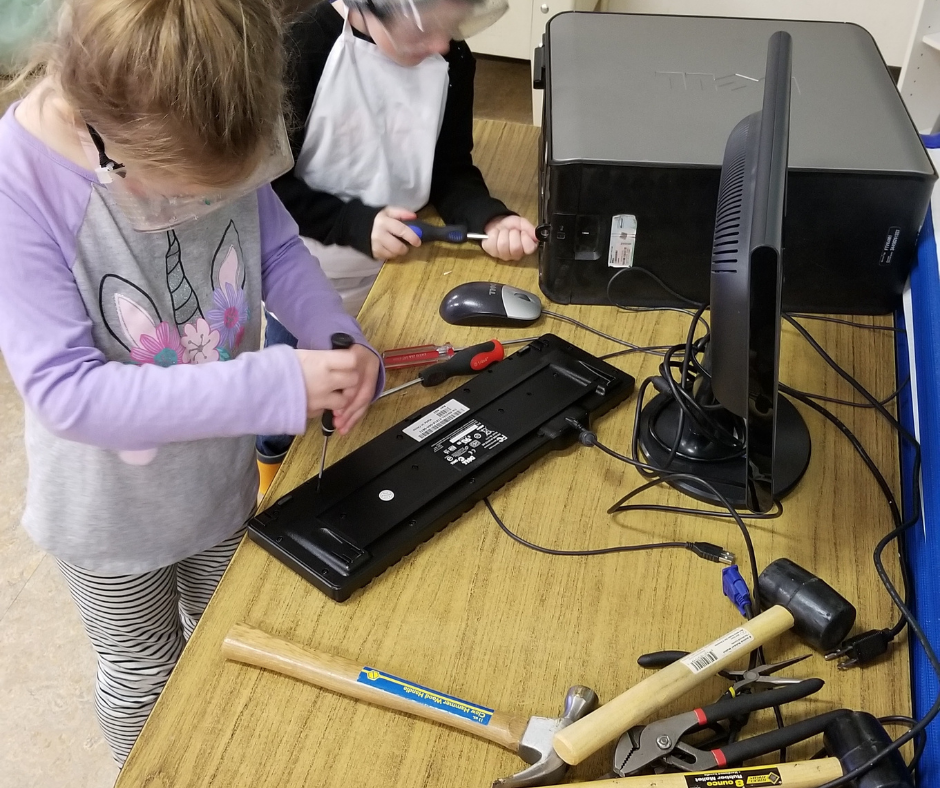
How Do Loose Parts Support an Emergent Curriculum?
An emergent curriculum is one where the projects and ideas emerge from the children’s interests. Rather than a pre-packaged curriculum that dictates the activities for the class without consideration of the child’s interest or ability, our staff observes, documents, and practices inquiry to determine the projects, activities, and materials presented within the classroom environment. This process allows our school to not only meet, but exceed the developmental milestones and standards established by the Oregon Department of Early Learning, in a method that is relevant, meaningful and engaging for our students.
Physical play happens with loose parts as children pick up and move materials, both big and small. Constructive play occurs with materials such as blocks, fabric, boards, boxes, nuts & bolts, and a variety of tools. Dramatic play occurs when children build playhouses, castles, and forts. Children use loose parts to create games with rules, establish leadership and develop a sense of self. Loose parts can support collaborative group play with many peers, or be used by one child alone, or two children playing side by side in parallel play. The use of open-ended material can also lead to risky play (more on this later!) From play comes learning and the research is clear: this is how learning happens.
Loose parts are the tools used by our educators to nurture and stimulate discovery, prompt meaningful connections, and provide ample opportunity for open-ended play. The process is the most important aspect of our approach- more important than the end product, which will be different for every child depending on their own individual approach.

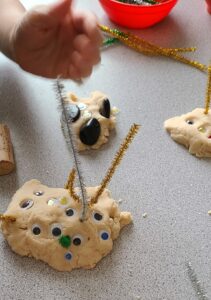
Want to Help?

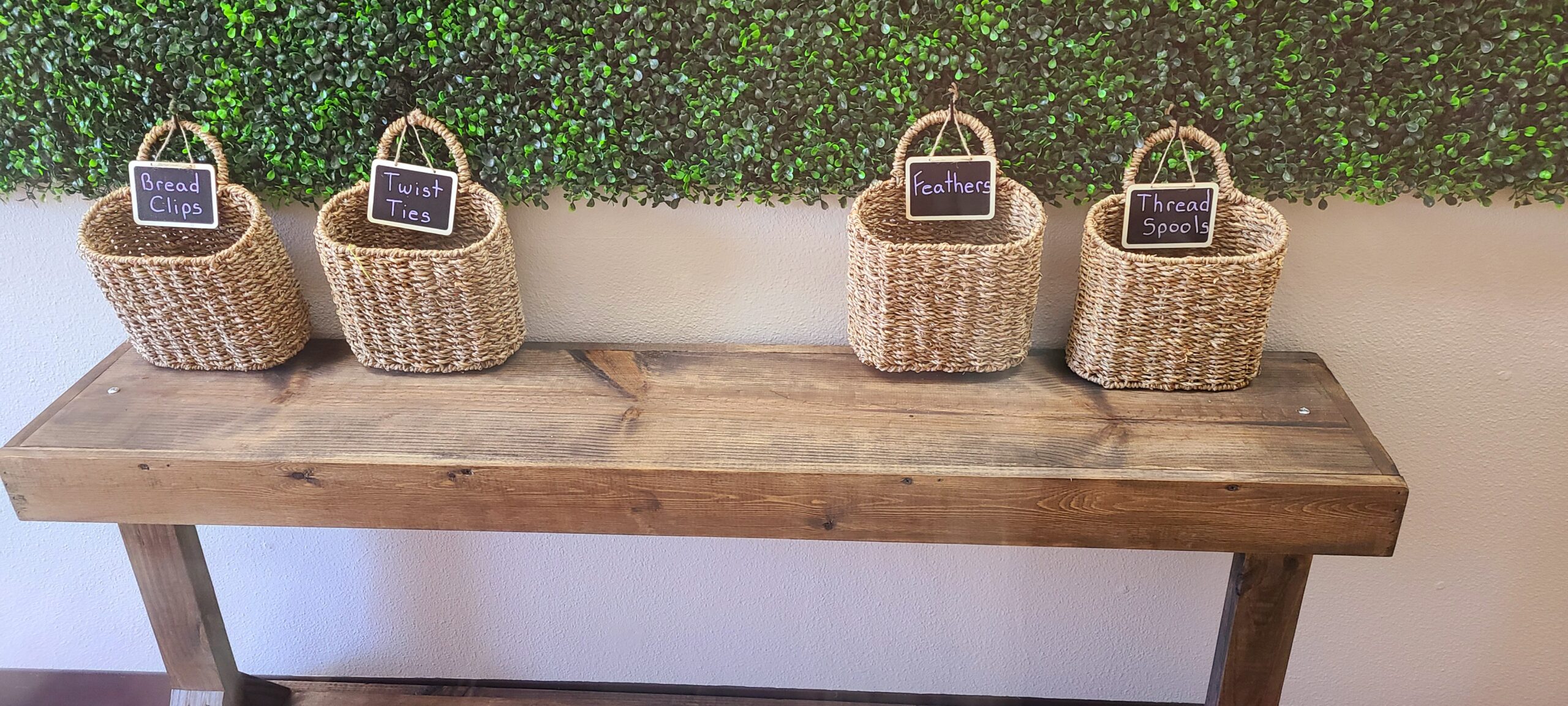

We have established a loose part drop-off in the front hallway! Please consider donating the requested loose parts, and we will put them to use, helping to build our stash of materials that inspire creative minds!


